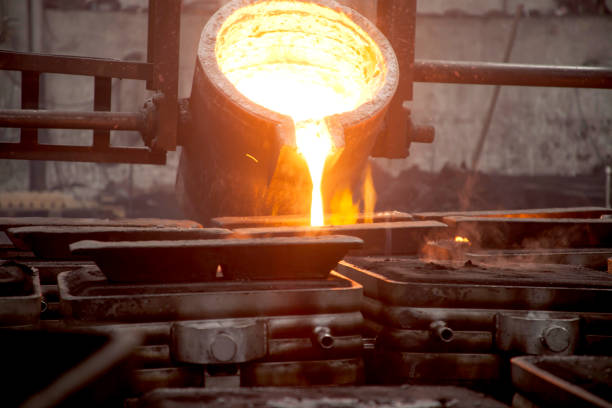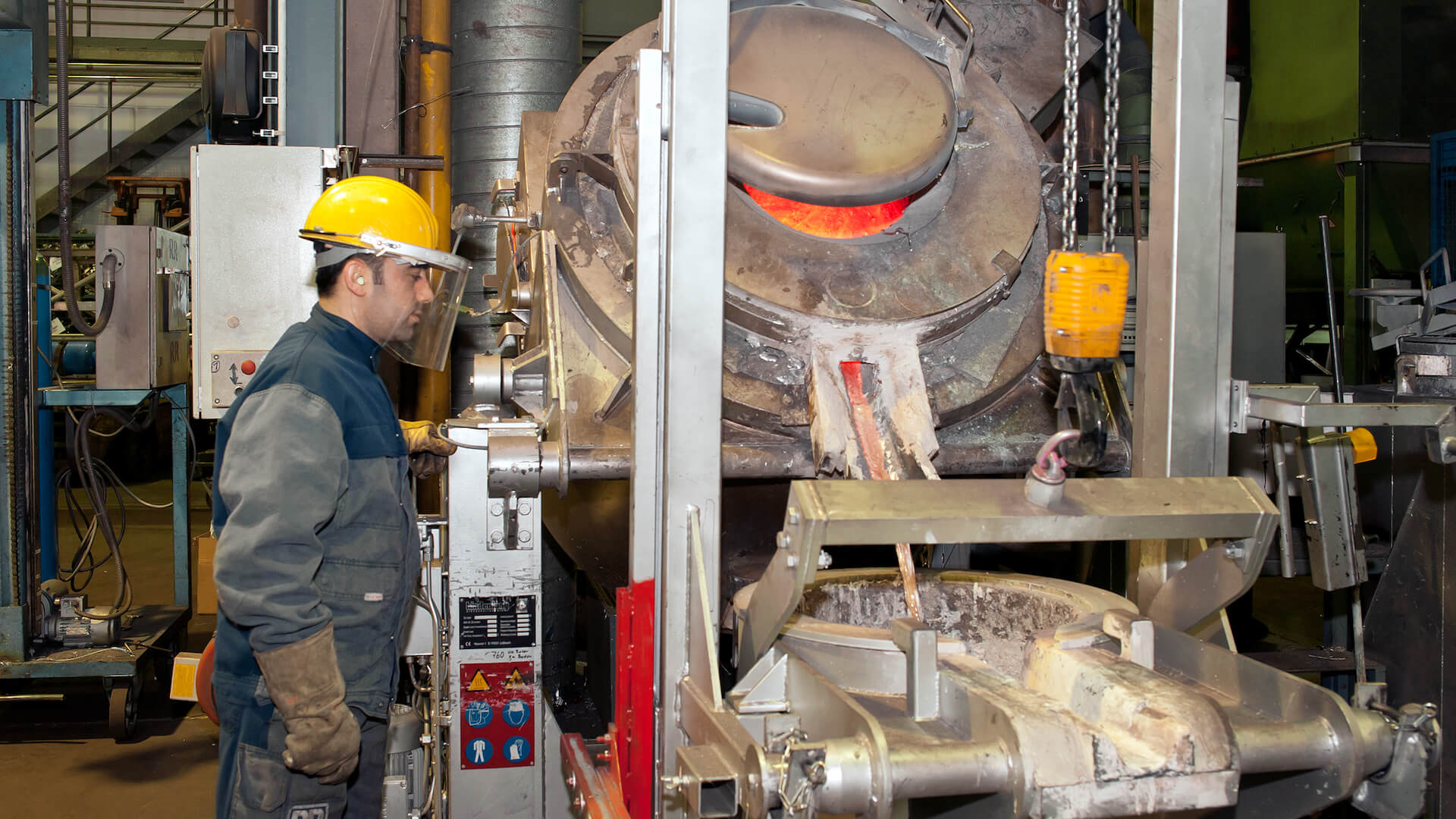How Lightweight Aluminum Castings Enhance Efficiency in Transportation
Wiki Article

Recognizing the Process: Exactly How Aluminum Foundries Produce High-Quality Products
Aluminum foundries play a crucial duty in producing premium items with a thorough process. It starts with melting raw aluminum, which gets rid of pollutants. Later, various molding techniques form the metal right into wanted forms. Precision during putting and solidification is essential to satisfy precise specs. The lasts include finishing touches that enhance durability and appearance. As modern technology breakthroughs, these procedures are improved even more. What innovations are forming the future of aluminum foundries?The Melting Process: Changing Raw Aluminum
The melting process works as an important step in changing raw aluminum into usable products. Originally, aluminum scrap or raw ingots are placed in a heating system where they go through high temperature levels, typically getting to around 660 levels Celsius. This intense heat creates the aluminum to liquefy, allowing impurities to increase to the surface, where they can be skimmed off.Different melting strategies, such as induction melting or gas-fired melting, may be used relying on the certain needs of the foundry. The choice of technique can influence power effectiveness and steel top quality. Preserving exact temperature level control is essential to ensure consistent melting and to avoid oxidation that can jeopardize the material.
As soon as melted, the aluminum awaits additional handling, setting the stage for succeeding operations that will mold it into certain forms and items. Aluminum Foundry. The quality of the melting procedure straight affects the integrity of the last aluminum things generated
Molding Methods: Shaping the Future
After the aluminum has been melted and contaminations removed, it is all set for forming through various molding strategies. One of one of the most prevalent approaches is sand casting, where a mold and mildew is produced from sand and a binder. This technique enables for detailed layouts and is cost-efficient for low to tool production runs. One more popular approach is die casting, which entails forcing molten aluminum into a steel mold under high stress. This strategy leads to high precision and smooth surfaces, making it ideal for automation.
Long-term mold and mildew casting is additionally made use of, employing recyclable molds that enhance dimensional accuracy and surface finish. Each molding method supplies special benefits, allowing foundries to tailor their processes based upon product specifications and manufacturing volume. By choosing the appropriate approach, aluminum foundries can guarantee remarkable top quality and efficiency in their end products, solidifying their function in numerous sectors.
Putting and Solidification: The Art of Casting
Putting liquified aluminum right into molds marks a vital phase in the spreading process, where precision and timing are necessary - Metal Castings. The factory team must thoroughly control the temperature level of the aluminum to assure ideal fluidity, protecting against defects such as porosity or cold shuts. As the metal is poured, it flows right into the intricacies of the mold, loading every cavity to develop the wanted shapeSolidification begins instantly as the liquified aluminum changes and cools to a solid state. This stage is affected by numerous click over here aspects, including the mold and mildew material, thickness, and ambient temperature level. The cooling rate needs to be taken care of to stay clear of anxiety fractures or warping in the completed product.
When strengthened, the aluminum handles the precise dimensions and attributes of the mold, establishing the stage for succeeding processing. This pouring and solidification procedure exemplifies the delicate equilibrium of art and science in aluminum casting, essential for producing high-grade products.
Ending Up Touches: Making Certain High Quality and Accuracy
Assuring high quality and accuracy in aluminum products calls for precise attention to information throughout the finishing process. This stage includes different methods intended at improving the surface area attributes and dimensional precision of the cast components. Common methods consist of machining, surface area therapy, and sprucing up. Machining fixes any kind of dimensional inconsistencies and accomplishes the preferred tolerances, while surface therapies, such as anodizing or powder layer, give corrosion resistance and enhance aesthetic allure.Polishing eliminates surface flaws, causing a smooth surface that fulfills strict requirements. Quality assurance is critical; each completed item goes through extensive evaluation to determine any defects. Advanced measuring tools, like coordinate determining devices (CMM), are typically utilized to assure conformity with layout requirements. In addition, knowledgeable specialists play a necessary role, bringing experience and proficiency to determine issues that equipments might overlook. This complete finishing procedure inevitably guarantees that the aluminum items meet consumer assumptions for high quality and efficiency.
Developments in Aluminum Foundry Modern Technology
The search of top quality and accuracy in aluminum items has actually resulted in considerable developments in foundry technology. Innovations such as click here to find out more robot automation have streamlined procedures, improving efficiency and decreasing human error. These robotics are currently efficient in executing complicated jobs, including accurate mold handling and product pouring, which guarantees constant product top quality.Furthermore, the combination of computer system mathematical control (CNC) makers has transformed machining procedures, enabling for intricate styles and tighter tolerances. Advanced simulation software application facilitates much better procedure preparation by maximizing and anticipating possible problems metal circulation. Additionally, the adoption of environmentally friendly methods, such as reusing aluminum scrap and making use of low-emission heaters, has boosted sustainability in the industry.

Often Asked Concerns
What Kinds Of Aluminum Alloys Are Generally Made Use Of in Shops?
Frequently utilized aluminum alloys in foundries include 356, 319, and 413. These alloys are understood for their exceptional spreading residential properties, mechanical stamina, and resistance to corrosion, making them ideal for a wide array of applications.How Do Foundries Ensure Environmental Sustainability in Their Processes?
Factories execute ecological sustainability by recycling aluminum scrap, maximizing power efficiency, decreasing emissions, making use of environmentally friendly materials, and adhering to governing standards, thus minimizing their environmental impact while keeping production high quality and effectiveness.What Safety Actions Are Implemented in Aluminum Foundries?
Aluminum foundries apply different precaution, including personal safety equipment, ventilation systems, normal safety training, emergency situation reaction procedures, and equipment upkeep checks. These methods aim to lessen threats and assure the well-being of all workers involved.Exactly How Do Foundries Take Care Of Flaws in Cast Products?
Foundries address flaws in actors products by using extensive assessment strategies, consisting of aesthetic checks and non-destructive screening. When defects are identified, they may remodel or junk products, making certain adherence to top quality standards and client requirements.What Is the Common Lead Time for Aluminum Spreading Projects?
The common preparation for aluminum spreading jobs ranges from a few weeks to several months. Elements affecting this timeline include style complexity, manufacturing quantity, and the accessibility of products, which differ considerably across various foundries.Aluminum foundries play a crucial duty in producing high-grade products with a precise procedure. Aluminum Foundry. The factory group should thoroughly control the temperature of the aluminum visit to ensure suitable fluidness, protecting against flaws such as porosity or chilly shuts. The search of top quality and accuracy in aluminum products has led to considerable advancements in shop modern technology. Frequently utilized aluminum alloys in foundries consist of 356, 319, and 413. Aluminum foundries implement various safety and security actions, including personal protective tools, ventilation systems, regular security training, emergency situation response methods, and devices upkeep checks
Report this wiki page